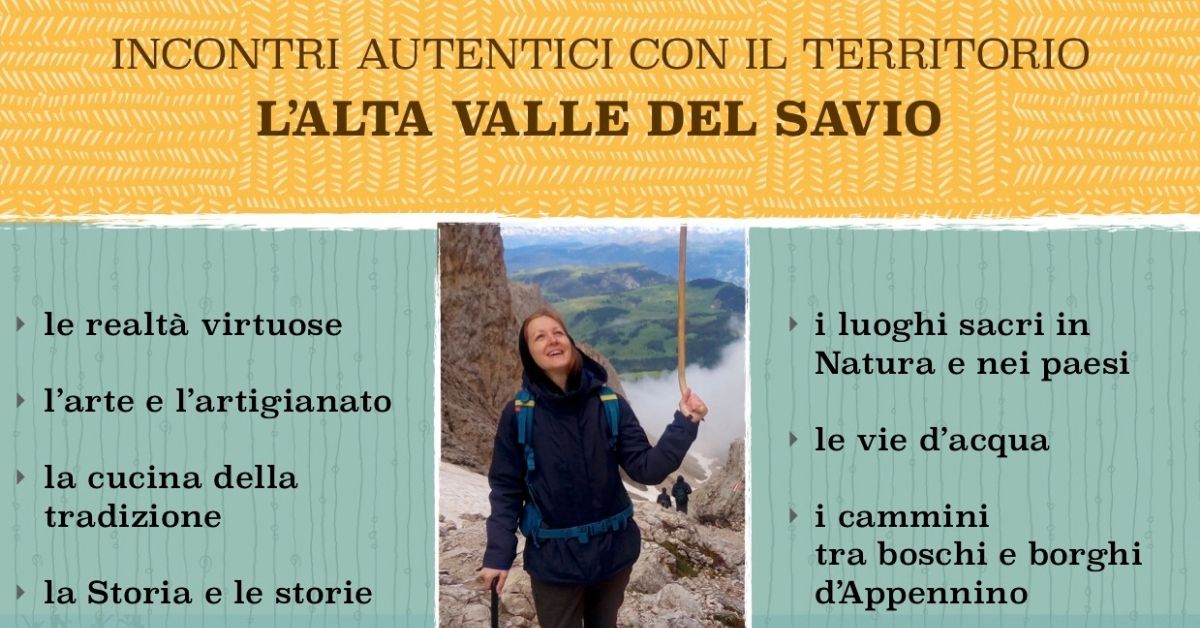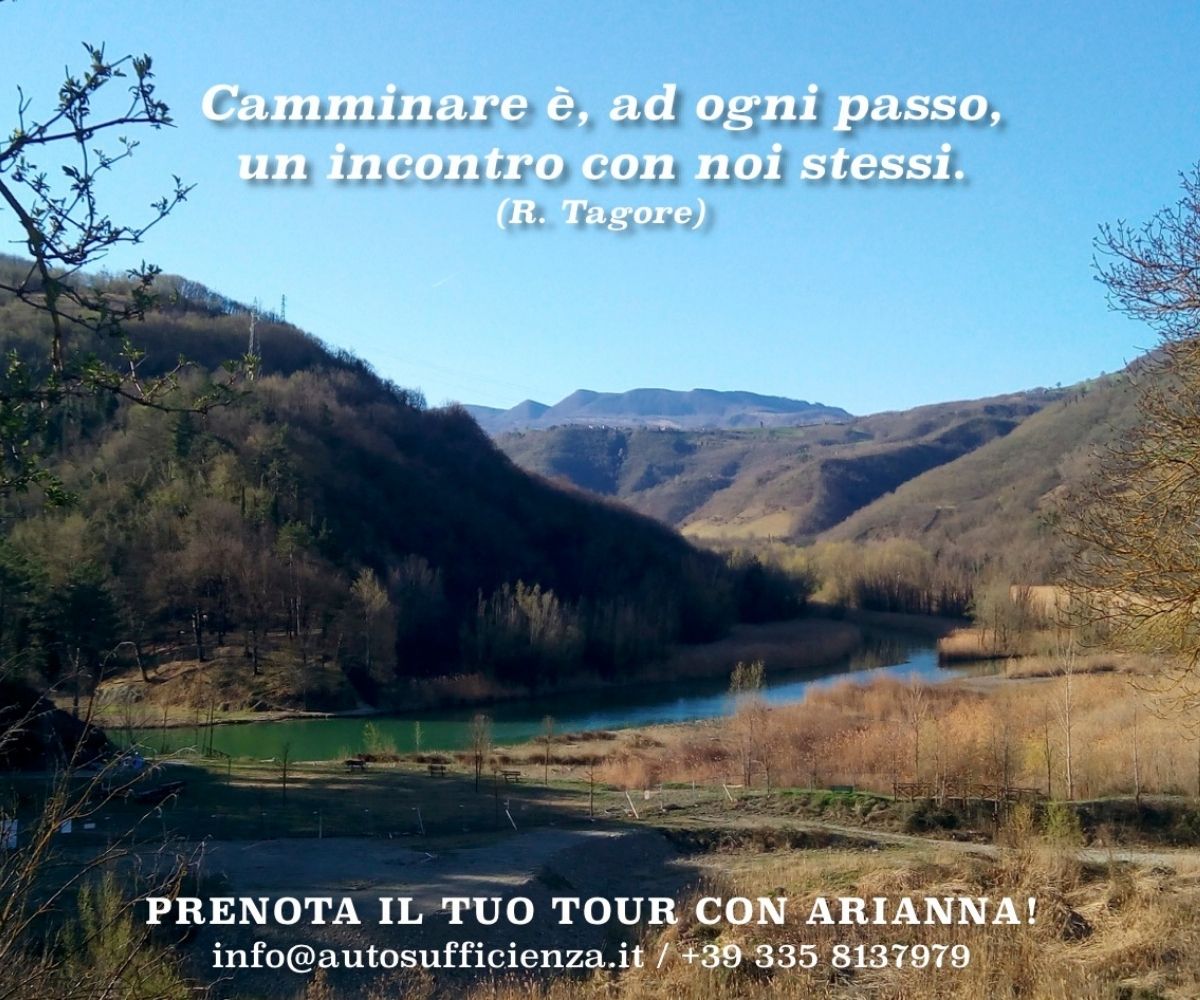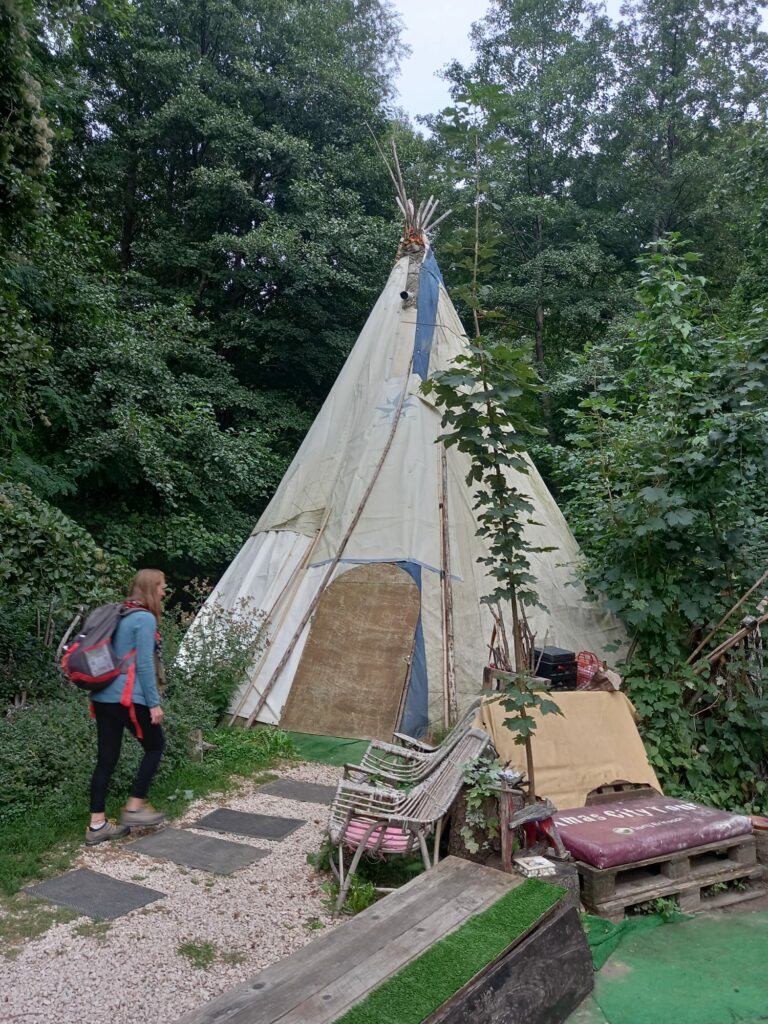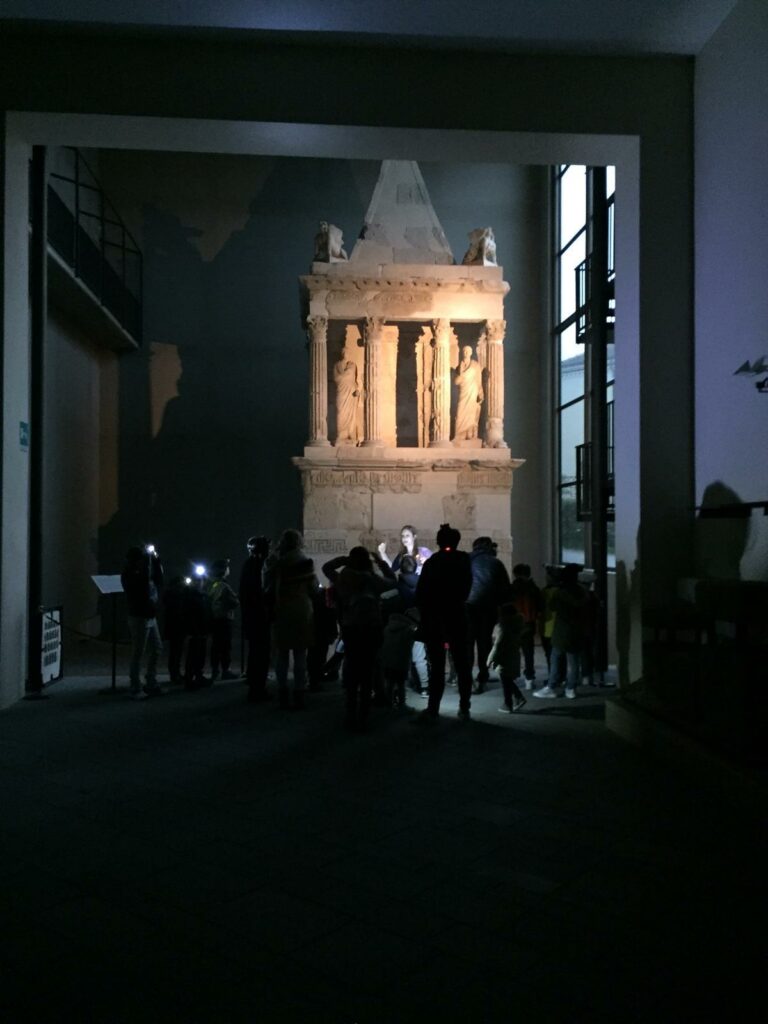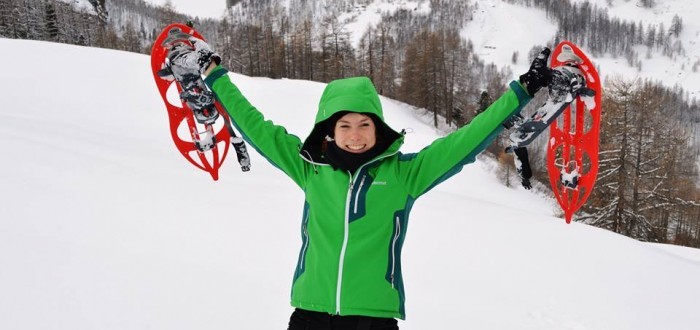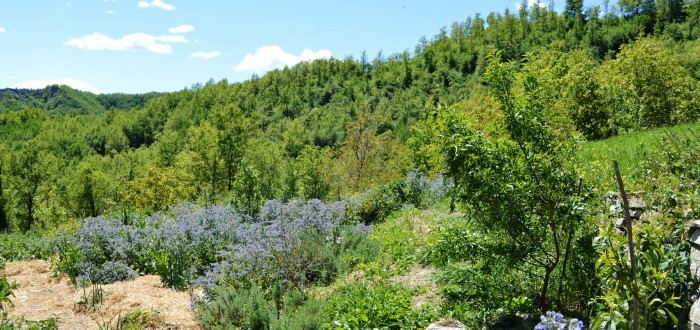Incontri autentici con il territorio: l’alta Valle del Savio
La Fattoria dell’Autosufficienza is a pearl set in an area of great natural beauty, in that hinterland of Romagna at the crossroads of paths, where every valley has always echoed the song of its river.
It is the Savio that marks it, that draws it. He has been able to shape the outline of the valley over the millennia, excavating rocks, creating terraces, carrying stones and clays with his torrents. It is his silver thread that unites the people from the plains to the mountains, and if you listen to them well you can understand where in the valley they were born. Where Life has laid them down. They change their speech from kilometre to kilometre and measure the distances from the filling of their cappelletti or crescioni. But the heart that is open to hospitality is the same, and the gestures of offering a piadina and a glass of Sangiovese remain the only access cards to every encounter.
Here, history – even ancient and illustrious history – only acts as a backdrop to the shared vicissitudes of an Apennine that was abandoned after World War II and now wants to be reborn. It wants to make itself known and to revive itself.
It is only on foot that you can truly encounter this territory: strolling through villages where people greet you even if they have never seen you before; rediscovering ancient mule tracks dotted with orchids and ridge paths that offer unforgettable views; reaching ancient parish churches, places of silence and prayer; or visiting small repopulated villages, where courageous pioneers devote themselves to traditional crafts and respectful agriculture. Or going up streams like crayfish in summer and bowing your head in front of the ruins of old mills, overgrown with brambles. Those, too, are sacred places. There the fox and the deer meet to drink in the moonlight, and the tawny owl sings on the highest branch of the old Alder.
Letting our steps lightly retrace the footsteps of those who have gone before us, following the rhythm of our breathing in a silence that becomes a serene mental void, we are surprised at how the encounter with this land and its inhabitants soon becomes an encounter with ourselves, with our nature, with our deepest and most authentic desires.
Arianna Rigoni – Tour Guide and Environmental Hiking Guide
EXCURSIONS WITH ARIANNA
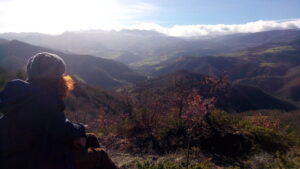
I love to share my knowledge of the territory to which I belong through routes that are not beaten by tourism and not flattened by conformism. And therefore not ‘fixed’ but variable and adaptable, just as I myself am naturally on the move every day and enrich my story (and my knowledge) with new encounters and experiences.
I prefer to accompany small groups so that I can truly dedicate myself to meeting each person, and guide each one on a small journey of immersion in the authentic life of this part of the world. “Small” for me is synonymous with care, even of the detail.
And yes, it is authenticity that I cherish in the encounter. No pretence, no sweetened tales or glitter to make surfaces shine: Beauty is there, it is there in light and shadow, only our eyes are no longer used to recognising it.
And if everything acts as a mirror, the moment we open our hearts to the Beauty of an encounter (with a landscape, an animal, a tree or a flower, an inhabitant of these places or even an ancient monument), then we are finally able to recognise once again the Beauty that lives within each of us.
“Walking is, with every step, an encounter with ourselves” – (R.Tagore)
CONTACT LA FATTORIA DELL’AUTOSUFFICIENZA (tel. 3358137979 o info@autosufficienza.it) AND BOOK YOUR PERSONALISED TOUR OF THE HIGH SAVIO VALLEY!
DEPENDING ON YOUR INTERESTS, WISHES AND AVAILABLE TIME, ARIANNA WILL BE ABLE TO SUGGEST THE MOST SUITABLE TOUR EXPERIENCE FOR YOU. TAKE A LOOK AT THE THEMATIC AREAS DESCRIBED… AND BE INSPIRED!
VIRTUOUS REALITIES
In the upper Savio Valley there are several virtuous realities created by people who have decided to return to living in contact with nature, in a more sustainable and careful way. There are those who made this choice 30-40 years ago, those who have recently started up; those who have dedicated themselves to organic farming, those who have put the principles of permaculture into practice, those who have specialised in herbalist practices or handicrafts, those who have decided to breed animals in a healthy way and have dedicated themselves to the production of food derived from this activity; those who have found themselves designing and experimenting with educational models in nature and those who have made sustainable hospitality their mission…
In short: brave pioneers there are! Their doors are open, their willingness to show and tell their stories is unique. A tour of these realities can be extremely useful for clarifying doubts, for making decisions, for realising that it really is possible to become the change we want to see in the world.
In addition to the wonderful proposal developed by La Fattoria dell’Autosufficienza and linked to the widespread community of Earth Keepers, with Arianna you can go and visit those virtuous realities in the area that interest you most, meet those who founded them and those who work there, and spend a few hours in their company.
A few examples? Of course, the closest Earth Keepers (such as Satanassi & Bosch’s Remedia and Massimo Corbara’s Biopificio), but also the Il Pagliaio agritourism, the Santa Lucia winery, the ‘Il Salice’ Indian Park and/or other people who have not created real farms but live in the countryside or in small ecovillages, devote themselves to art, crafts, horticulture, herb and mushroom picking, truffle hunting, etc.
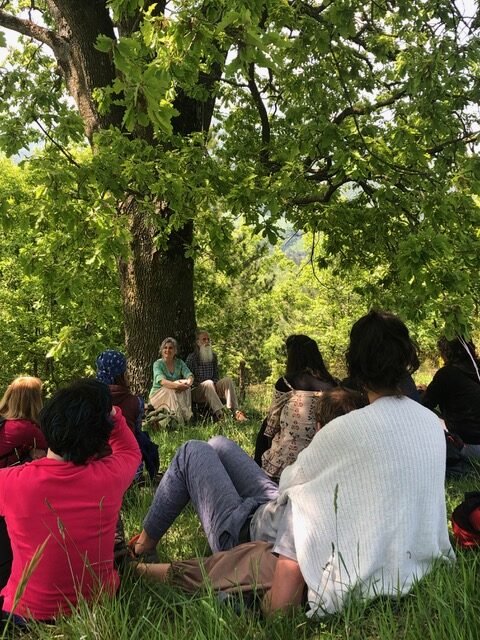
SACRED PLACES IN NATURE AND IN VILLAGES
There is a Way that encloses the territories of the Savio Valley like a magic casket: the Way of St. Vicinius, the thaumaturge and evangelising saint who lived in Sarsina in the 4th century, which still attracts thousands of pilgrims eager to receive a blessing with his famous “chain”, an object of worship linked to the saint and also used during exorcisms.
The sacred places that dot the Way are to be found both in the centre of the area’s small communities (basilicas, churches, cathedrals) and in the surrounding woods and countryside: ancient evocative parish churches, forgotten oratories, monasteries and hermitages isolated in the mountains, surrounded by columns of fir and beech trees.
Even if it is not devotion that moves you, the encounter with the sacredness of these places is a balm for the soul.
A few examples? Obviously the Cathedral Basilica of Sarsina and that of Santa Maria Assunta in Bagno di Romagna; but also the Sanctuary of the Madonna of Corzano, the Abbey of San Salvatore or the Parish Church of Montesorbo. Not to mention the Hermitage of Sant’Alberico or the Hermitage of Camaldoli, or those numerous small churches scattered among the hills, crumbling and deconsecrated, such as the one on Monte di Careste, that have taken on a special charm over the years…
HISTORY AND STORIES
Few people really know anything about it, but because of its geographical position and the richness of its territory, the upper Savio Valley has been affected by History, the one with a capital S, over the centuries: battles of conquest, the building of infrastructures, trade and exchanges have affected the towns of this inland passage.
There are many precious monuments, testimonies that time has spared and that leave the visitor open-mouthed: you can see them in Sarsina, the birthplace of Titus Maccius Plautus, with its millenary Cathedral and the Archaeological Museum full of Roman finds, or in Bagno di Romagna, already famous in antiquity for its thermal baths; but also in Mercato Saraceno where the ancient Pieve di Montesorbo is visible, and down as far as Cesena…
One day is not enough to see everything, but it can be interesting to be guided on a historical-archaeological walk and let the tale of history intertwine with that of more recent ‘stories’ of life… Ask the guide and the locals you meet along the way!
THE WATERWAYS
If the Savio is the great sage that accompanies with its song the journey of all the inhabitants of the valley to its mouth (a little south of Ravenna), it is really worth climbing up to Monte Fumaiolo and stopping just before, on the western slope, to walk to its source and drink the cold water that even in summer springs from the belly of the mountain.
It is said that the name ‘Fumaiolo’ has something to do with ‘fiume’ – river: rich in rivers, rich in water. And indeed, the area is rich in springs: just below the summit of Fumaiolo the Tiber, an illustrious river ‘sacred to the destinies of Rome’, has its source, and at the base of the southern slope are the Senatello springs. A few kilometres in that direction and you can reach the source of the Marecchia River, which flows into Rimini.
Waterways were the first and most important communication routes for mankind, and they draw the geography of a territory, determining the rise or demise of inhabited centres. Without water, there is no life.
Thus it can be particularly evocative, especially in summer, to walk up the course of the Savio river or its tributaries (such as the Para stream), to rest one’s gaze on the sheets of water of the Pontini and Lungo lakes, to admire the grandeur of the Ridracoli dam or to walk along the gradually wilder path that irregularly surrounds the basin of Lake Quarto, where numerous species of amphibians, fish, mammals and aquatic birds populate the large reed thicket or the flooded forest areas.
THE PATHS THROUGH VILLAGES AND APENNINE WOODS
In addition to St Vicinius Walk and other paths that skirt the Upper Savio Valley (Via Romea Germanica and the St. Francis Walk from Rimini to La Verna), the territory offers many opportunities for trekking in the most varied environments: from hill ridges to mountain slopes, from river and stream beds to high-altitude forests, passing through small villages and hamlets that are almost completely abandoned.
In the space of a few kilometres, the scenery varies greatly and the differences in altitude can also be challenging. The mountain paths (especially in the nearby Park of the Casentino Forests) are well signposted and kept alive by the constant presence of assiduous walkers, but it is always a good idea to go with an environmental excursion guide to identify the best route and fully enjoy the experience of encountering the territory… by walking!
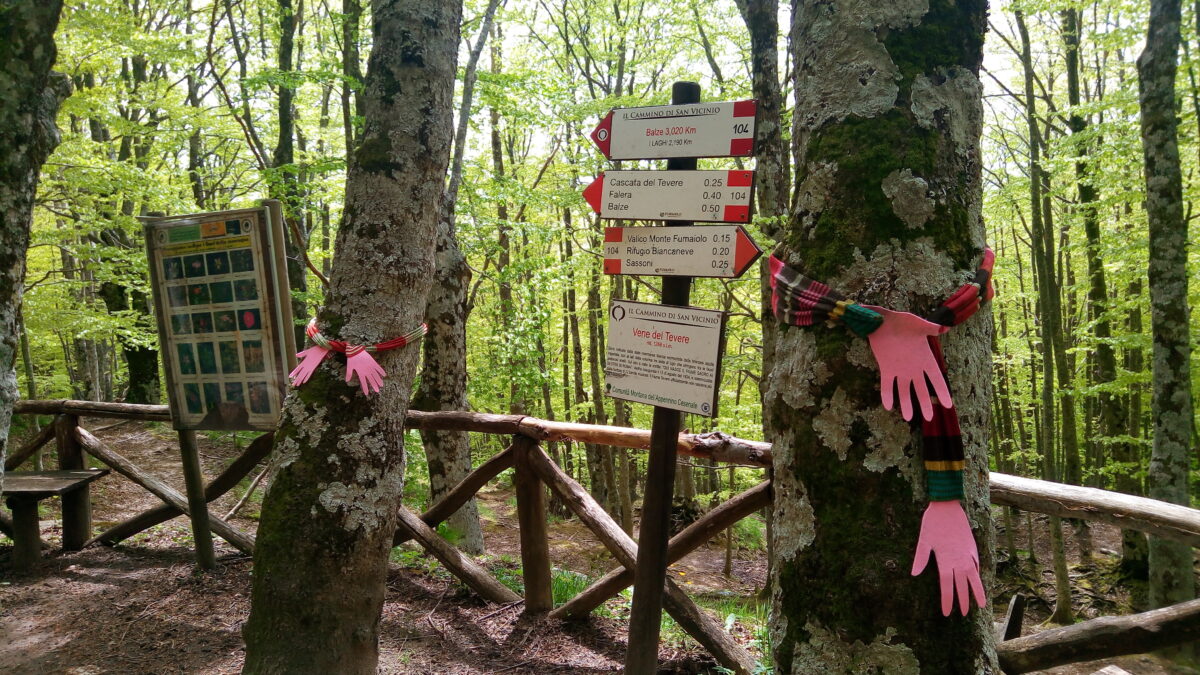
THE CUISINE OF TRADITION
A few lines are not enough to talk about the traditional cuisine of Romagna and in particular that of the upper Savio Valley: from homemade pasta to piadina and crescioni stuffed with pumpkin and potatoes, from roast meats to fresh and seasoned cheeses, from side dishes with wild herbs to typical desserts, such as the Easter pagnotta of Sarsina or castagnaccio.
By now, many culinary artists use only organic and fresh products, often self-produced, and adapt recipes to modern dietary requirements while maintaining the taste of tradition.
Not to mention the wines! The Mercato Saraceno area is rich in wineries and you can easily enjoy a good organic Sangiovese or an Albana of the best. In short: our tour cannot miss at least one food and wine stop!
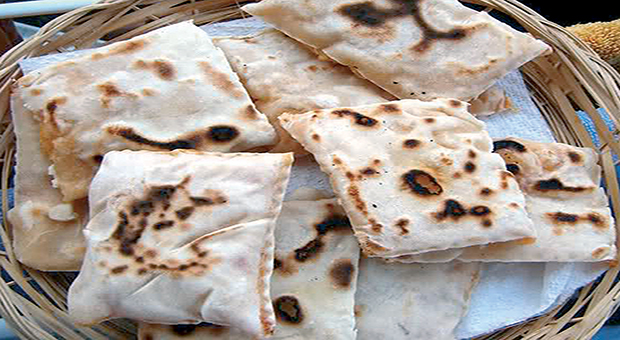
ART AND CRAFTSMANSHIP
Art as man’s sublime expressive capacity, perhaps in relation to his surroundings, can also be a monument, a mill, a mural, a square. And not necessarily an exhibition of paintings or photographs or sculptures, although even these works speak to us of the human aspiration to create, to express, to leave a mark. We welcome artistic events if there are any during your stay in the valley (the guide will inform you, if you wish!), but you will see that each tour will bring you closer in some way, sometimes surprisingly and mysteriously, to the art that is widespread in this territory, especially outside the towns…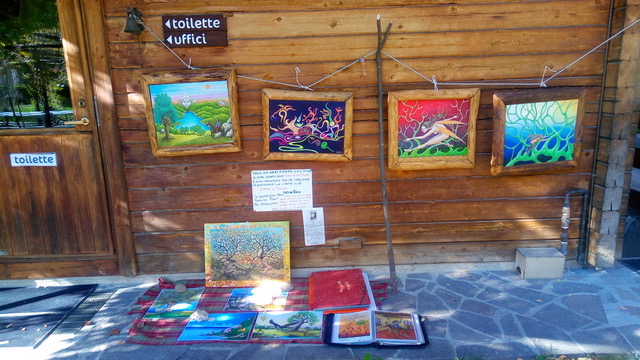
There are still those who hand down ancient crafts (such as shoemaking or basket-making), those who paint scenes of sylvan and fairy life, those who mould clay to make objects for everyday use, those who work with leather and those who experiment with vegetable dyes or specialise in completely handmade cosmetics.
The time one spends making things with one’s hands, whether works of art or craft, is a time rich in gifts and filled with love. It is not so easy to meet those who dedicate themselves to it: they are often simple people, strangers to the virtual world or the classic channels of communication. But they are the true custodians of the knowledge that is and will remain vital for mankind. To meet them is a rare privilege!

With her gaze always turned to the wide horizon and her roots firmly anchored in her homeland of Romagna, Arianna considers every encounter a true enrichment.
It is her mercurial nature that has driven her since her teenage years to study foreign languages and to travel around Europe (particularly Germany), immersing herself in ‘other’ cultures with naturalness and ease. In 2005, she graduated from the School for Interpreters in Forlì with a thesis on Russian literature. It is not so much the language itself that fascinates her, but the possibility of building bridges, of weaving relationships, of seeing one’s own history reflected in other histories and vice versa.
It is with this spirit that she moves through various working environments (translations, teaching, event organisation and tourist reception at the ITU in Sarsina) and finally arrives in 2011 at the herbalist company Remedia, where she can put her communication skills at the service of a large and virtuous project. Here, in fact, even plants speak, and the respectful and attentive relationship with them creates that Beauty that can cure.
This is where the desire to accompany visitors to the meeting with the places of Nature and with those people who, through their works, bear witness to its messages of unity, harmony and wellbeing comes to the fore. In 2016 she became a Tourist Guide and in 2021 an Environmental Hiking Guide. With simplicity and enthusiasm she shows the treasures of her land, tells its more or less ancient stories, lets the silence of sacred places speak to the hearts and lets the encounter happen, becoming a shared experience.
Related Posts
Incontri autentici con il territorio: l’alta Valle del Savio
La Fattoria dell’Autosufficienza è una perla incastonata in un territorio di grande naturale bellezza, in quell’entroterra romagnolo crocevia di cammini, dove da sempre ogni valle riecheggia del canto del suo fiume.
È il Savio che la segna, che la disegna. Lui ha saputo modellare la sagoma della valle nei millenni, scavando rocce, creando terrazzamenti, portando con le sue fiumane pietre e argille. È il suo filo argentato che unisce le genti dalla pianura alla montagna, e se le ascolti bene sai capire a che altezza della valle sono nate. Dove la Vita le ha posate. Cambiano parlata di chilometro in chilometro e misurano le distanze dal ripieno dei cappelletti o dei crescioni. Ma il cuore aperto all’ospitalità è lo stesso, e i gesti dell’offrire una piadina e un bicchiere di Sangiovese restano le uniche carte di accesso a ogni incontro.
Qui la Storia – anche quella antica, e illustre – fa solo da scenario alle vicende comuni di un Appennino abbandonato nel secondo dopoguerra, che oggi ha voglia di rinascere. Ha voglia di farsi conoscere e di rianimarsi.
Solo a piedi si può incontrare davvero questo territorio: passeggiando per i paesi dove la gente ti saluta anche se non ti ha mai visto; riscoprendo antiche mulattiere costellate di orchidee e sentieri di crinale che regalano indimenticabili panorami; raggiungendo antiche Pievi, luoghi di silenzio e preghiera; o visitando piccoli borghi ripopolati, dove coraggiosi pionieri si dedicano all’artigianato tradizionale e a un’agricoltura del rispetto. O ancora, risalendo i torrenti come gamberi d’estate e chinando il capo di fronte ai ruderi dei vecchi mulini, ricoperti di rovi. Anche quelli sono luoghi sacri. Lì la volpe e il capriolo si danno appuntamento per bere al chiaro di luna, e l’allocco canta sul ramo più alto del vecchio Ontano.
Lasciando che i nostri passi ripercorrano leggeri le orme di chi ci ha preceduto, seguendo il ritmo del nostro respiro in un silenzio che si fa sereno vuoto mentale, ci sorprendiamo di come l’incontro con questo territorio e i suoi abitanti si faccia presto incontro con noi stessi, con la nostra natura, con i nostri desideri più profondi e autentici.
Arianna Rigoni – Guida turistica e Guida Ambientale Escursionistica
ESCURSIONI CON ARIANNA

Amo condividere la conoscenza del territorio a cui appartengo attraverso percorsi non battuti dal turismo e non appiattiti dal conformismo. E dunque non “fissi” ma variabili ed adattabili, così come io stessa sono naturalmente in cammino ogni giorno e arricchisco la mia storia (e la mia conoscenza) di incontri ed esperienze nuove.
Preferisco accompagnare piccoli gruppi per potermi davvero dedicare all’incontro con ogni persona, e guidare ciascuno in un piccolo viaggio di immersione nella vita autentica di questa parte di mondo. “Piccolo” per me è sinonimo di cura, anche del dettaglio.
E sì, è l’autenticità che mi sta a cuore nell’incontro. Niente finzioni, niente racconti edulcorati o brillantini a far splendere le superfici: la Bellezza c’è, c’è nella luce e nell’ombra, solo i nostri occhi non sono più abituati a riconoscerla.
E se tutto ci fa da specchio, nel momento in cui apriamo il cuore alla Bellezza di un incontro (con un paesaggio, un animale, un albero o un fiore, un abitante di questi luoghi o addirittura un monumento antico), allora siamo finalmente in grado di riconoscere di nuovo la Bellezza che vive dentro ciascuno di noi.
CONTATTA LA FATTORIA DELL’AUTOSUFFICIENZA (tel. 3358137979 o info@autosufficienza.it) E PRENOTA IL TUO TOUR PERSONALIZZATO NELL’ALTA VALLE DEL SAVIO!
IN BASE AI TUOI INTERESSI, AI TUOI DESIDERI E AL TEMPO A DISPOSIZIONE, ARIANNA SAPRÀ PROPORTI L’ESPERIENZA DI VISITA PIÙ ADATTA A TE. DAI UN’OCCHIATA ALLE AREE TEMATICHE DESCRITTE…E LASCIATI ISPIRARE!
LE REALTA’ VIRTUOSE
In alta Valle del Savio esistono diverse realtà virtuose create da persone che hanno deciso di tornare a vivere a contatto con la natura, in modo più sostenibile e attento. C’è chi ha fatto questa scelta già 30-40 anni fa, chi si è avviato da poco; chi si è dedicato all’agricoltura biologica, chi ha messo in pratica i principi della permacultura, chi si è specializzato in pratiche erboristiche o nell’artigianato, chi ha deciso di allevare animali in modo sano e si è dedicato alla produzione di alimenti derivati da questa attività; chi si è ritrovato a progettare e sperimentare modelli educativi in natura e chi ha fatto dell’accoglienza sostenibile la propria missione…
Insomma: di pionieri coraggiosi ce ne sono! Le loro porte sono aperte, la loro disponibilità a mostrare e raccontarsi è unica. Un tour di visite presso queste realtà può rivelarsi estremamente utile per chiarire dei dubbi, per prendere decisioni, per rendersi conto che è davvero possibile diventare il cambiamento che vogliamo vedere nel mondo.
Oltre alla meravigliosa proposta messa a punto dalla Fattoria dell’Autosufficienza e legata alla comunità diffusa dei Custodi della Terra, con Arianna è possibile andare a visitare quelle realtà virtuose della zona che più ti interessano, incontrare chi le ha fondate e chi ci lavora, trascorrere qualche ora in loro compagnia.
Qualche esempio? Naturalmente i Custodi della Terra più vicini (come Remedia di Satanassi & Bosch e il Biopificio di Massimo Corbara), ma anche l’agriturismo Il Pagliaio, l’azienda vitivinicola Santa Lucia, il Parco Indiano “Il Salice” e/o altre persone che non hanno creato vere e proprie aziende ma vivono in campagna o in piccoli ecovillaggi, si dedicano all’arte, all’artigianato, all’orticoltura, alla raccolta di erbe e funghi, alla ricerca del tartufo ecc.

I LUOGHI SACRI IN NATURA E NEI PAESI
C’è un Cammino che racchiude come in uno scrigno magico i territori della Valle del Savio: il Cammino di San Vicinio, il santo taumaturgo ed evangelizzatore vissuto a Sarsina nel IV secolo, che richiama ancora oggi migliaia di pellegrini desiderosi di ricevere la benedizione con la sua famosa “catena”, oggetto di culto legato al Santo e da sempre utilizzato anche durante gli esorcismi.
I luoghi sacri che costellano il Cammino si trovano sia al centro delle piccole comunità della zona (basiliche, chiese, cattedrali) che nei boschi e nelle campagne circostanti: antiche suggestive pievi, mistedie e oratori dimenticati, monasteri ed eremi isolati sulle montagne, circondati da colonne di Abeti e Faggi.
Se anche non è la devozione a muoverti, l’incontro con la sacralità di questi luoghi è un balsamo per l’anima.
Qualche esempio? Ovviamente la Basilica Cattedrale di Sarsina e quella di Santa Maria Assunta di Bagno di Romagna; ma anche il Santuario della Madonna di Corzano, la Badia di San Salvatore o la Pieve di Montesorbo. Per non parlare dell’Eremo di Sant’Alberico o dell’Eremo di Camaldoli, oppure di quelle numerose chiesette sparpagliate tra i colli, diroccate e sconsacrate, come quella del monte di Careste, che hanno assunto negli anni uno speciale fascino…
LA STORIA E LE STORIE
Pochi ne sanno davvero qualcosa, ma per la sua posizione geografica e per la ricchezza del suo territorio l’alta Valle del Savio è stata interessata nei secoli dalla Storia, quella con la S maiuscola: battaglie di conquista, costruzione di infrastrutture, commerci e scambi hanno interessato i centri abitati di questo luogo di passaggio nell’entroterra.
Di monumenti pregiati ve ne sono, testimonianze che il tempo ha risparmiato e che lasciano a bocca aperta il visitatore: puoi vederli a Sarsina, la patria di Tito Maccio Plauto, con la millenaria Cattedrale e il Museo Archeologico ricco di reperti di epoca romana, o a Bagno di Romagna, già famoso in antichità per le sue Terme; ma anche a Mercato Saraceno dove è visibile l’antica Pieve di Montesorbo, e giù fino a Cesena…
Non basta un giorno per vedere tutto, ma può essere interessante farsi guidare in una passeggiata storico-archeologica e lasciare che il racconto della Storia si intrecci a quello delle “storie” di vita più recenti… Chiedi alla guida e alle persone del posto che incontrerai lungo la strada!
LE VIE D’ACQUA
Se il Savio è il grande saggio che accompagna con il suo canto il cammino di tutti gli abitanti della Valle fino alla foce (poco più a sud di Ravenna), merita veramente salire verso il Monte Fumaiolo e fermarsi poco prima, nel versante occidentale, per raggiungere a piedi la sua sorgente e bere l’acqua fredda che anche d’estate scaturisce dal ventre della Montagna.
Si dice che il nome “Fumaiolo” abbia a che fare con “fiume”: ricco di fiumi, ricco di acque. E in effetti la zona è ricca di sorgenti: proprio sotto la vetta del Fumaiolo nasce il Tevere, fiume illustre e “sacro ai destini di Roma”, e alla base del versante sud si trovano le sorgenti del Senatello. Pochi chilometri in quella direzione e si può raggiungere la sorgente del fiume Marecchia, che sfocia a Rimini.
Le vie d’acqua sono state le prime e più importanti vie di comunicazione per l’uomo, e disegnano la geografia di un territorio determinando il sorgere o il morire di centri abitati. Senza acqua non c’è vita.
Può rivelarsi così particolarmente suggestivo, soprattutto in estate, risalire per alcuni tratti il corso del Savio o dei suoi affluenti (come il torrente Para), riposare lo sguardo sugli specchi d’acqua dei laghi Pontini e Lungo, ammirare la grandiosità della diga di Ridracoli o inoltrarsi nel sentiero via via più selvaggio che contorna in modo irregolare il bacino del lago di Quarto, dove numerose specie di anfibi, pesci, mammiferi e uccelli acquatici popolano l’ampio canneto o le aree di foresta allagate.
I CAMMINI TRA BORGHI E BOSCHI D’APPENNINO
Oltre al Cammino di San Vicinio e ad altri Cammini che sfiorano l’Alta Valle del Savio (Via Romea Germanica e il Cammino di San Francesco da Rimini alla Verna), il territorio offre tantissime possibilità di dedicarsi al trekking negli ambienti più svariati: dai crinali di collina alle pendici montuose, dal letto dei fiumi e dei torrenti alle foreste di alta quota, attraversando piccoli paesi e borghi quasi del tutto abbandonati.
Nell’arco di pochi chilometri gli scenari variano moltissimo e i dislivelli possono essere anche impegnativi. I sentieri di montagna (soprattutto nel vicino Parco delle Foreste Casentinesi) sono ben segnalati e mantenuti vivi dalla frequentazione costante di camminatori assidui, ma è sempre bene muoversi in compagnia di una guida ambientale escursionistica per individuare il percorso migliore e godersi appieno l’esperienza di incontro con il territorio… camminando!

LA CUCINA DELLA TRADIZIONE
Non bastano poche righe per parlare della cucina tradizionale romagnola e in particolare di quella dell’alta Valle del Savio: dalla pasta fatta in casa alla piadina e ai crescioni ripieni di zucca e patate, dagli arrosti ai formaggi freschi e stagionati, dai contorni con erbe di campo ai dolci tipici, come la pagnotta pasquale di Sarsina o il castagnaccio.
Ormai tanti artisti della cucina utilizzano solo prodotti biologici e freschi, spesso di autoproduzione, e adattano le ricette alle esigenze alimentari moderne, ma mantenendo il gusto della tradizione.
Per non parlare dei vini! La zona di Mercato Saraceno è ricca di cantine e si può facilmente gustare un buon sangiovese biologico o un’albana delle migliori. Insomma: nel nostro tour non può mancare almeno una tappa eno-gastronomica!

L’ARTE E L’ARTIGIANATO
Arte come sublime capacità espressiva dell’uomo, magari in relazione all’ambiente che lo circonda, può essere anche un monumento, un mulino, un murales, una piazza. E non per forza una mostra di quadri o fotografie o sculture, anche se pure queste opere ci parlano dell’aspirazione umana a creare, ad esprimere, a lasciare un segno. Ben vengano eventi artistici se durante la vostra permanenza in Valle ce ne saranno (sarà premura della guida informarvi, se lo desiderate!), ma vedrete che ogni tour saprà avvicinarvi in qualche modo, a volte sorprendente e misterioso, all’arte diffusa in questo territorio, soprattutto fuori dai centri abitati…
C’è ancora chi tramanda antichi mestieri artigianali (come il calzolaio o il cestaio), chi dipinge scene di vita silvestre e fatata, chi modella l’argilla per farne oggetti d’uso quotidiano, chi lavora la pelle e chi sperimenta tinture vegetali o si è specializzato nella produzione cosmetica completamente artigianale.
Il tempo che si occupa a fare le cose con le proprie mani, che siano opere d’arte o d’artigianato, è un tempo ricco di doni e colmo d’amore. Non è così facile incontrare chi vi si dedica: spesso si tratta di persone semplici, estranee al mondo virtuale o ai classici canali di comunicazione. Ma sono loro i veri custodi di quei saperi che sono e resteranno vitali per il genere umano. Incontrarli è un privilegio raro!

Con lo sguardo sempre rivolto all’ampio orizzonte e le radici saldamente ancorate alla sua terra di Romagna, Arianna considera ogni incontro una vera e propria ricchezza.
E’ il suo carattere mercuriale a spingerla fin dall’adolescenza a studiare le lingue straniere e a viaggiare in Europa (in particolare in Germania), immergendosi nelle culture “altre” con naturalezza e agio. Nel 2005 si laurea alla Scuola per Interpreti di Forlì con una tesi in letteratura russa. Non è tanto la lingua in sé ad appassionarla, quanto la possibilità di creare ponti, di intessere relazioni, di vedere la propria storia riflessa nelle altre storie e viceversa.
E’ con questo spirito che si muove in vari ambienti di lavoro (traduzioni, insegnamento, organizzazione eventi e accoglienza turistica nello UIT di Sarsina) e finalmente approda nel 2011 all’azienda erboristica Remedia, dove può mettere le sue competenze comunicative a servizio di un grande e virtuoso progetto. Qui infatti anche le piante parlano, e la relazione rispettosa e attenta con loro crea quella Bellezza che sa curare.
Ecco allora che si fa strada la voglia di accompagnare i visitatori all’incontro con i luoghi di Natura e con quelle persone che attraverso le loro opere ne testimoniano i messaggi di unità, armonia e benessere. Nel 2016 diventa Guida Turistica e nel 2021 Guida Ambientale Escursionistica. Con semplicità ed entusiasmo mostra i tesori della sua terra, ne racconta le storie più o meno antiche, lascia che il silenzio dei luoghi sacri parli ai cuori e che l’incontro accada, diventando esperienza condivisa.
Newsletter
ARGOMENTI
- Activities (8)
- Attività (10)
- Attrattive (16)
- Cosa fare (22)
- Farm products (4)
- Fattoria dell'autosufficienza (51)
- Fattoria dell'autosufficienza (39)
- Fauna (8)
- Flora (5)
- I nostri modelli (14)
- Istruzioni per viaggiare (2)
- News (63)
- News (96)
- Our models (14)
- Permacultura (30)
- Permaculture (23)
- Prodotti della fattoria (4)
- Senza categoria (2)
- Senza categoria (4)
- Things to do (22)
- Tourist attractions (15)
